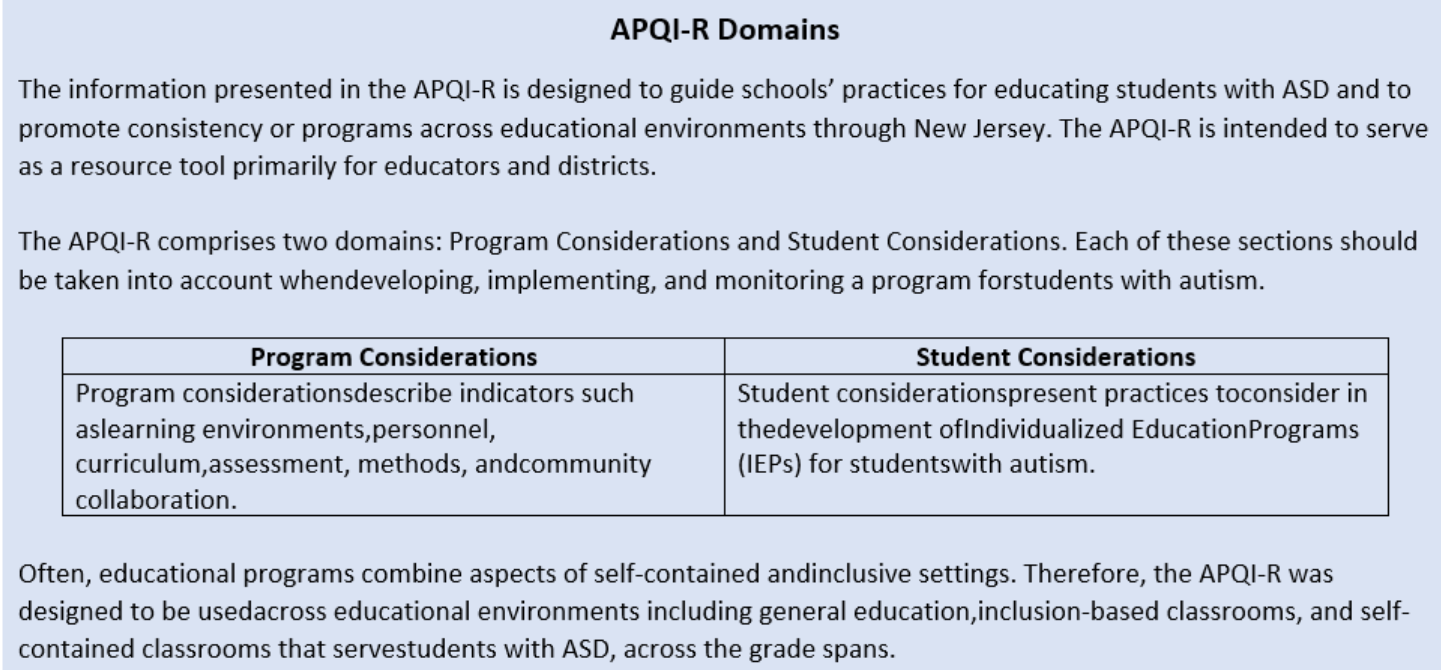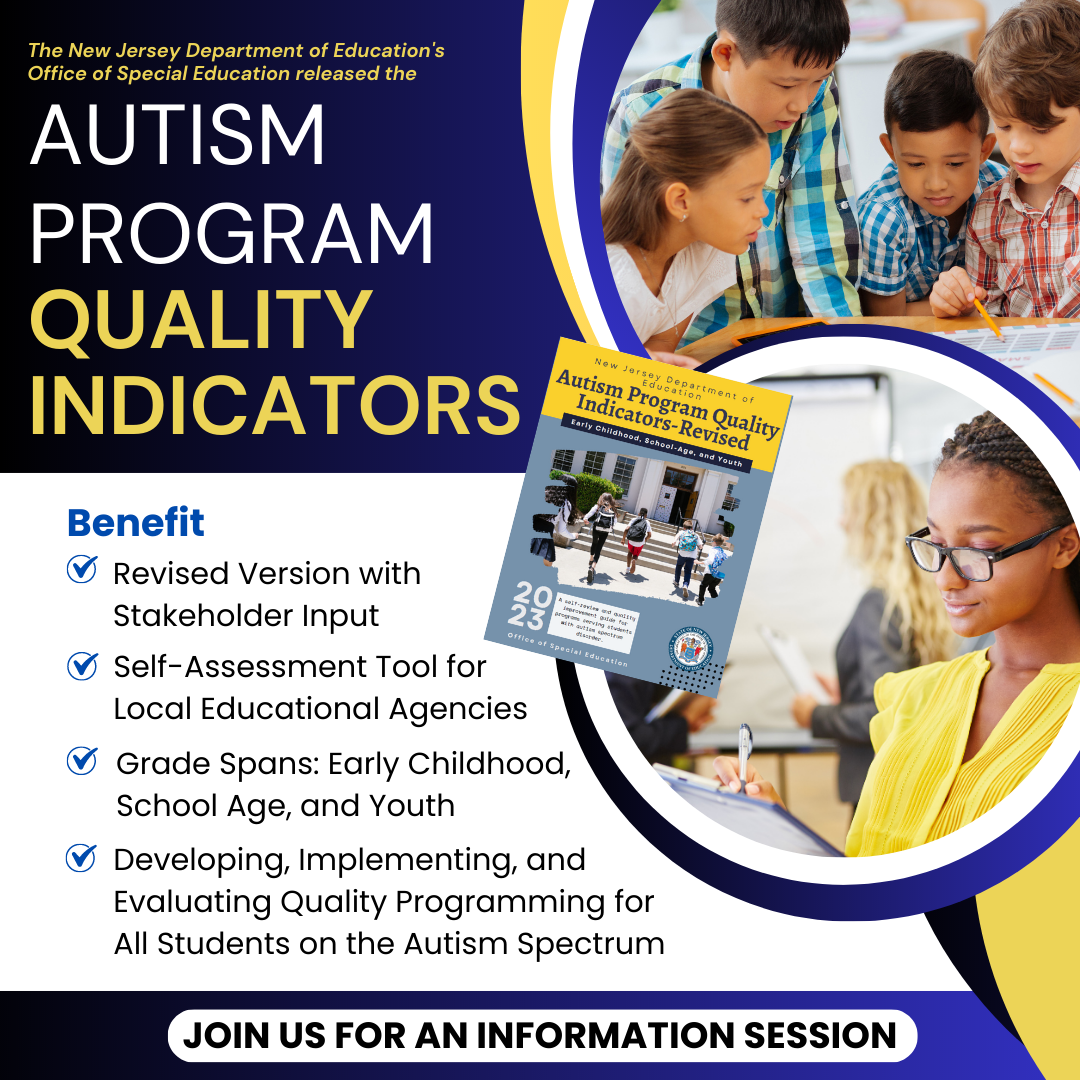With the new developments in the identification and education of students with ASD, the new APQI-R replaces a previous version New Jersey Autism Program Quality Indicators: A Self-Review of Quality Improvement Guide for Programs Servicing Youth Students with Autism Spectrum Disorder, published in 2004.
The purpose of the revised document was to:
- Replace older versions of the NJ APQI;
- Assist school-based practitioners in the field of education, including schools and other educational settings;
- Establish a framework that can be replicated in general education to promote more inclusive opportunities and ensure least restrictive environment (LRE);
- Identify and promote the use of evidence-based practices for effective programming and instruction for students with ASD; and
- Promote non-biased considerations for economically disadvantaged children, children who are diverse in race and ethnicity, and children who speak a language other than English
Visit the "E-Learning Opportunities" website to access the Autism Program Quality Indicators - Revised, Information Session (Part 1)
The goal of educating all students with autism is to have the same opportunities to be effective members of society and be as independent as possible as individuals without a diagnosis of ASD. This can be accomplished by removing barriers to participation and access to these opportunities.
High-quality programs for students with autism share common characteristics (or indicators), which, in practice, set standards that can serve as best practices. The APQI-R reflects current evidence-based practices (EBP) for students with autism.
The information presented in the downloadable APQI-R is designed to guide schools’ practices for educating students with ASD and to promote consistency of programs across educational environments throughout New Jersey.
Autism is a lifelong disability; therefore, the APQI-R has been divided across three grade spans: Early Childhood (PreK), School Age (Grades K–5), and Youth (Grades 6–12). Although the indicators and their associated components have been divided into grade spans, each quality indicator and its components should be used with discretion. Application with a student of any age should be considered individually and incorporate professional judgement and data-based decision making.

The Autism Specialist provides technical assistance and training to teachers, administrators and parents regarding autism programming, services, and supports. In addition, the autism specialist is responsible for gathering and disseminating resources for families and educators in areas critical to improving instruction and positive outcomes for students with autism and multiple disabilities, including, but not limited to, evidence-based practices, functional behavior assessment, positive behavioral supports, and IEP development. For additional assistance or questions, please contact, Amanda Philp (Ph.D., BCBA-D) by email at amanda.philp@doe.nj.gov or via telephone at (609) 376-3988.
Click here to access the following:
 Official Site of The State of New Jersey
Official Site of The State of New Jersey

